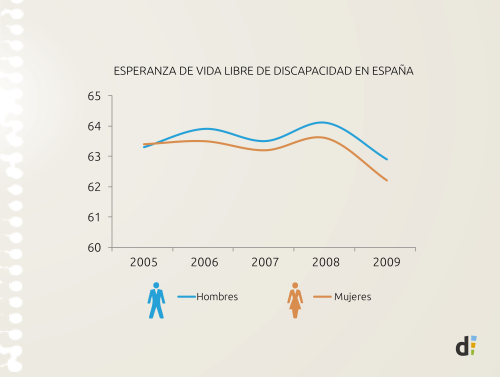Workshop on Data Journalism: Transforming Data Into Stories. Selected Projects

Exodus
by Gloria Rodríguez-Pina and Lucía González

Demographic changes in Spain in the last decade reflect the economic development and then the fall into the depression of the country. The first decade of 2000 saw a great increase of population with the arrival of millions of immigrants (over 14% increase between 2000 and 2012). The international financial crisis hit the country from 2008 onwards, and the tendency dramatically changed: immigrants and Spaniards alike flew the country and left the cities as the unemployment rate skyrocketed. By 2013, the registered population fell for the first time in 17 years, with a decrease of 205.788 people.
The Spanish Statistical Office (http://www.ine.es/en/) and the Ministry of Employment (www.empleo.gob.es/) have a good set of population data that can help understanding how many people and how have come to and left the country, and who they are (gender, age, nationality). Further, it can explain their origin, their next residence and why they left. Are population changes directly related to unemployment rates in the provinces of residence? Which territories have been more affected by these recent changes? These questions might also have an answer through the analysis of the statistics.
The project will present in a graphic, attractive and simple way, the findings of data crossing and analysis. It will complement data and maps with the opinion of experts on statistics, demographics and economics and the profiles of migrants. It will also seek looking at the future tendencies expected to be seen in the coming years.
According to the INE, trend estimation calculate that Spain will lose one tenth of its population in the coming 40 years: “An estimated 5,2 million residents could leave over the next 10 years and 18,1 million through to 2052” (http://elpais.com/elpais/2012/11/19/inenglish/1353339551_322908.html).
An interdisciplinary group of Journalist, Statistics Experts, Graphic Designer and Web Developers will create a microsite to tell the general and particular stories of the exodus of Spain driven by economy's up and downs of the last decade.
Contact with this project through th Medialab's Prado Community
Globalization and health trends
by Gloria Álvarez Hernández and Óscar Pérez Zapata

Our project is focused on the analysis, visualization and communication of Healthy life years trends by gender across Europe and Spain. Healthy Life Years (HLY) indicator is in the core set of the European Structural Indicators and measure quality of life expectancy.
http://ec.europa.eu/health/indicators/healthy_life_years/index_en.htm
While regular life expectancy is linked to the amount of years lived, Healthy Life Years focus on years lived without disability (physical and/or mental).Regular life expectancy deals with quantity of life and healthy life years account for the quality of those years lived.
Data show that while life expectancy is growing across Europe and Spain, healthy life years (i.e. disability-free life expectancy) has been declining for some countries and groups. Our particular focus would be on trends in gaps across genders and countries.
Data point that women and Mediterranean countries used to have a comparative advantage in terms of healthy life years. However, the latest trends point that this advantage is disappearing and women and Mediterranean countries like Spain are losing their privileged position. Our proposal aims to a better analysis, visualization, communication of these trends.
Optionally we could propose some analysis/visualizations that go deeper in terms of potential explanations. Specifically trends are not correlated with per-country health spending, what seems to suggest that health and healthy life years in particular do not depend on the health bill. This suggests that increasing health levels is not about how much you spend in the health system but the living and working conditions instead (this is what is known as social determinants of health). One interesting dynamic here is that additional labour market participation data point that as women increase their participation rates in the labour market, their health seem to suffer in terms of healthy life years.
We would be using original data from the EU, OECD and the Institute for Health Metrics and Evaluation
http://ec.europa.eu/health/indicators/indicators/http://www.oecd-ilibrary.org/social-issues-migration-health/health-key-tables-from-oecd_20758480
http://www.healthmetricsandevaluation.org/gbd/visualizations/gbd-cause-patterns
Our intended outcomes for the project would be an infographic, a short article and potentially and interactive visualization that accounts for longitudinal/temporal trends by gender and country.
A tentative schedule could be around three weeks for data preparation and analysis and another three/four weeks to work on the infographic and article. In case we would decide to include an interactive visualization, timing requirements should be added.
Currently team is composed by two people with data analysis profiles and experience in dealing with epidemiology/health data. A journalist, a geo-data (GIS) profile and potentially a programmer for the interactive visualization would be more than welcomed.
Contact with this project through th Medialab's Prado Community
Municipal budgets and later budgetary modifications
by Jesús Rodríguez González

We intend to be able to better analyse, by creating different visualizations and apps, the data found on the local budget of the city of Seville, as well as later modifications via city council assembly sessions and decisions published on the council's website. This will allow to see the distribution of the spending in a more clear way, thus making it easier to the citizen and other journalists / media to work with the raw data, as well as provide better means to supervise and control our representative's work.
Plus the added data from the city council meetings can help the analysis of how the budget slowly evolves over time at a later stage, and might even end up being quite different from the original one.
Most of the data recollection work has been already done by this team (about 90% of it), and even though we base our investigation on Seville's city budget, it's very simple to extrapolate the criteria used here to create similar mappings in any local community, thus helping a better overall understanding of how spending is done by our governments.
Contact with this project through th Medialab's Prado Community
Violence in the Lives of Homeless People
by Gema Castilla, Jesús Ruiz del Centro Assís and Luis Carlos Perea from the "Fundación Red de Apoyo a La Integración Sociolaboral Rais Fundación"

Authr: Juan Lemus
Homeless people are amongst the most vulnerable people in our society, suffering high levels of poverty and social exclusion.
An innovator study, carried out by Assis Shelter, and RAIS Foundation have revealed that they are also victims of exceptionally high levels of violence, crime and victimisation. This study is based on an exhaustive data collection since 1996, focusing on all homeless deaths that media have published in this period. Amazingly much of it is committed by the general public and goes unreported.
This work brings to light the stark reality that exists for homeless people as they face persistent abuse and threats on a day-to-day basis leaving them traumatised and living in fear. We are calling for immediate attention to this critical issue facing individuals who are homeless across Spain. Compared to the general public they are several times more likely to have experienced violence, humiliation, rapes and theft.
Our goal is to give people what it takes to believe in themselves again and to shoulder responsibility for their own lives during a transit period designed to give new impetus and a new meaning to their lives. With this project, we want to get and share expertise to help us utilising this data, creating multiple views of this information and making visible this issue. Our final purpose is to reveal this situation and make sensitive civil society to the need for bringing about changes in order to modify the panorama of social exclusion, discrimination and structural violence.
Contact with this project through th Medialab's Prado Community
Interactive board of the university fees in the Madrid Community
by Elena Sevilla Gil

The aim of this project is to provide accurate information about tuition fees at public universities in Madrid region by an interactive graphic with multiple options regarding different degrees. The graphic would show in every particular case -- with regard to each course-- the number of ECTS by academic year, the fee per ECTS and the total annual fee, with a reference to the cost in second, third, and so forth enrollment. This graphic is intended to present in a direct way the effect of the last tuition fee rises imposed by the regional Government for next year, between 5% and 30%.
Contact with this project through th Medialab's Prado Community
Black spots in the city
by Teresa Benito Magallón

As per statistical data, available information, etc. the proposal of the a workshop of visualization is to undertake the development of an interactive application that marks and shows the “black points” in a special map for all he cities, especially for those sites and places more dangerous.
The first target is to perform visualization that summarise the available information, the application will allow to introduce more data related new hits, car accidents, etc. and thus to update the information.
Contact with this project through th Medialab's Prado Community
Exporting wars
by Daniele Grasso and Roberto Díaz

Weapons trade is one of the biggest and less known economic activities of the world. In every war in the planet there are european made weapons: this means that our continent is not so far from conflicts in countries unknown for the public opinion.
Using the data from the Official Journal of the European Union annual reports on the European Union Code of Conduct on Arms Exports and Campaing Against Arms Trade, I would like to map the flow of weapons (and the money related to it) from the european countries to the rest of the world.
Contact with this project through th Medialab's Prado Community
The dark side of the energy
by the OKFN Spanish group, Carlos Corominas and eldiario.es

The energy sector is defined as a non transparent sector. The way that the energetic system is conceived, how the deficit in the system has been produced, why the energetic companies hire ex politicians, where does the energetic resources come from, which amount of the GDP is spent in energetic resources imports or what are de impacts of the energetic model are some of the questions that are suggested to be analyzed.
This project will show accurately the way that a strategic sector as energy is organized. We will offer contextualized, visual and functional information to allow the lector to discover the reality of this sector. It is especially opaque and difficult to understand to people unconnected with it. This opacity is shown in the way the sector is configured and the relationship between sector and politics, known as revolving doors. It is not either transparent about the origin of the energetic resources. One of the targets of the workshop is to show where do the oil, the uranium, the gas and the coal come from and how this affects to other countries’ political system or Human Rights status. Another element which will be studied is the consumption by Comunities and productive sectors. The impacts of the energetic system in the economy and the environment will also be analyzed.
The data are collected in reports, publications, graphics and index from public and private organizations from Spain and abroad. Although the data are public, are rarely shown to the audience in a simple and functional way.
There are a lot of sources and resources to obtain the data such as Corporación de reservas estratégicas de productos petrolíferos (CORES), the International Energy Agency, Red Eléctrica de España, INE, Eurostat, Consejo de Seguridad Nuclear o State secretariats reports. One of the targets of the workshop will be to analyze which data are relevant and which is the best way to show them to the audience.
Other sources that will be available in the workshop will be:
https://www.hackerleague.org/hackathons/clean-web-hackathon-nyc
https://www.hackerleague.org/hackathons/roma-cleanweb-hackathon
https://www.hackerleague.org/hackathons/boston-cleanweb-hackathon
http://fi.okfn.org/meetups/energy-hackathon-2013/
http://energyhack.de/
http://www.ecohacknyc.org/
http://ecohacksf.org/
http://www.ecohackmtl.org/en
Johny West from OpenOil will cooperate in the workshop.
Contact with this project through th Medialab's Prado Community
With the support of BBVA.
Climate Finance Maps
by the Data J Lab

Author: Chris Arsenault/IPS
Climate Finance Maps explores complex climate change trends from the perspectives of international finance and global climate policy. The goal is to combine data from several sources to create a series of interactive maps, making these data accessible to the public. We use financial data produced by the Overseas Development Institute (London) to give insight into the quantity and direction of economic forces underlying climate policy.
We concentrate on two aspects of climate policy that are interconnected but usually addressed in isolation: climate funds and energy subsidies. Climate funds are international climate finance initiatives designed to help developing countries address the challenges of climate change. Energy subsidies are direct or indirect subsidies that national governments allocate to support fuel consumption, and fossil fuels in particular, although they are one of the main sources of carbon dioxide (thus the most important cause of climate change). While climate funds aim to foster climate-compatible development, subsidies to fossil fuels dwarf any efforts in that direction. We aim at uncovering and visualize these contradictions.



 Medialab-Matadero Madrid
Medialab-Matadero Madrid